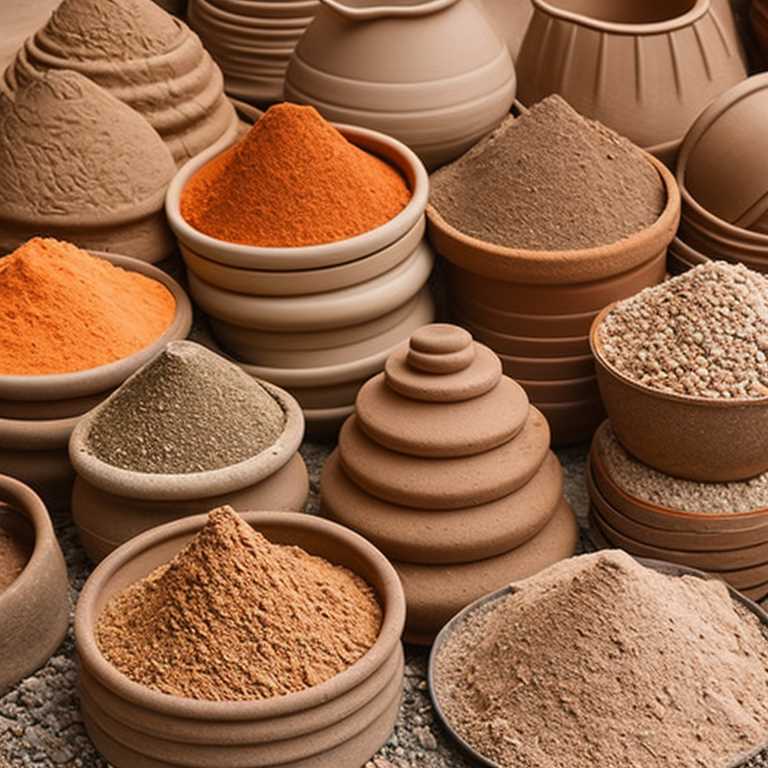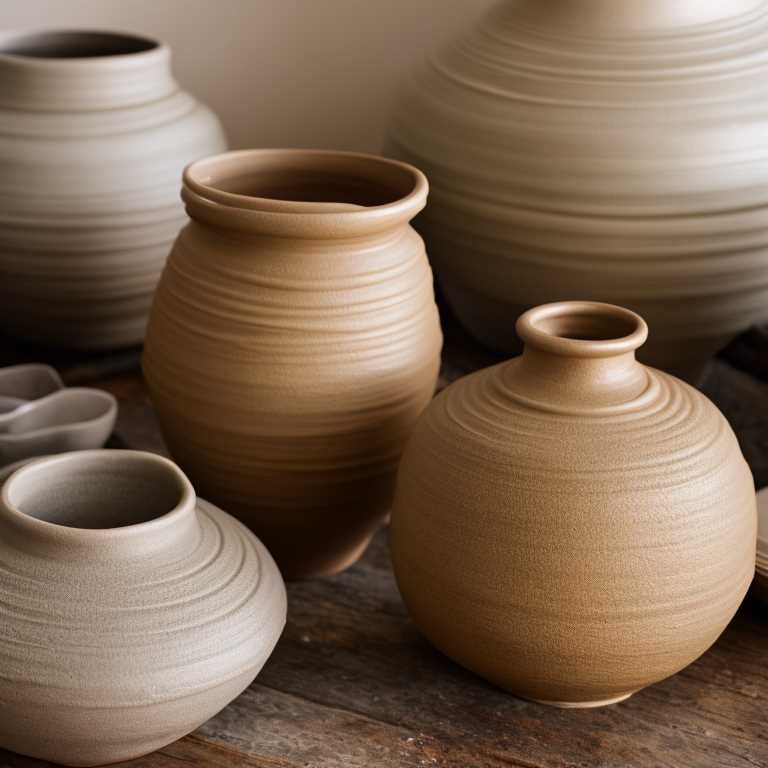Pottery glaze is a coating applied to ceramic ware to make it more durable, waterproof, and visually appealing. It is made up of different ingredients that give it unique properties and characteristics.
The foundation of pottery glaze is a mixture of silica, alumina, and flux. Silica gives glaze its hardness and resistance to heat, while alumina provides stability and opacity. Flux, which is usually made of a combination of feldspar, limestone, and dolomite, lowers the melting point of the glaze and allows it to fuse to the ceramic surface.
Other ingredients commonly found in pottery glaze include clay, kaolin, and talc. These substances help to bind the glaze particles together and make it more stable. They also affect the texture and appearance of the glaze, giving it a matte or glossy finish.
Colorants are another important component of pottery glaze. These additives can be natural minerals, such as iron oxide or cobalt oxide, or synthetic pigments. Colorants are added in varying amounts to achieve the desired hue and saturation. They can also interact with other ingredients in the glaze to create interesting effects, such as speckling or crystallization.
Opacifiers are used to make glaze opaque or translucent. They can be added in small amounts to create a milky or cloudy appearance, or in larger amounts to completely obscure the underlying ceramic surface. Common opacifiers include tin oxide, zirconium silicate, and titanium dioxide.
Glaze modifiers are added to adjust the properties of the glaze. These can include deflocculants, which help to disperse the particles evenly, or suspending agents, which prevent settling. Modifiers can also affect the texture and thickness of the glaze, or make it more or less prone to cracking or chipping.
The process of making pottery glaze can be complex and time-consuming. Each ingredient must be carefully measured and mixed in the correct proportions to achieve the desired result. Glaze recipes can vary widely depending on the type of clay used, the firing temperature, and the desired effect.
One popular type of pottery glaze is the high-fire glaze, which is fired at temperatures between 1,200 and 1,300 degrees Celsius. These glazes are typically made with a high proportion of feldspar and silica, which gives them a smooth, glossy appearance. They can also be formulated to produce a wide range of colors and effects.
Another type of pottery glaze is the low-fire glaze, which is fired at temperatures between 800 and 1,100 degrees Celsius. These glazes are usually made with a higher proportion of clay and talc, which makes them more porous and absorbent. They can also be more prone to cracking and chipping, but can produce a range of interesting effects.
In addition to their aesthetic qualities, pottery glazes can also have functional benefits. Glazes can make ceramic ware more durable and resistant to scratching, chipping, and staining. They can also make it easier to clean and sanitize, which is especially important for food and beverage containers.
However, glazes can also pose health and safety risks if not used properly. Many glazes contain toxic substances, such as lead or cadmium, that can leach into food or drink if the glaze is cracked or damaged. It is important for potters to carefully choose their glaze ingredients and ensure that they are properly fired and tested for safety.
Pottery glaze is a complex mixture of ingredients that can have a significant impact on the appearance and functionality of ceramic ware. Glaze recipes can vary widely depending on the desired effect, and potters must take care to choose safe and effective ingredients. With proper use and care, pottery glazes can enhance the beauty and longevity of ceramic objects for years to come.

